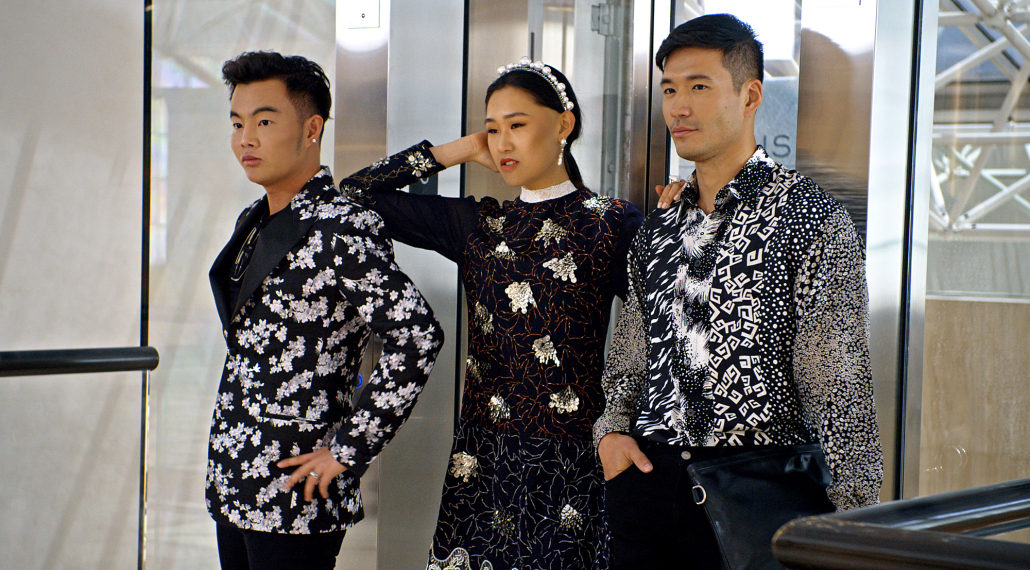‘Bling Empire’ rules as depiction of Asian American authenticity

The first few scenes of the television series “Bling Empire” depict a world of opulence, excess and status.
It’s no surprise given the show — which premiered in early 2021 on Netflix — follows a group of wealthy Asians and Asian Americans living in Los Angeles. It’s a “slice-of-life” vignette for the audience into what it’s like to have luxury at your disposal.
There’s no question that “Bling Empire,” like many other reality shows in which wealth is the central character, doesn’t really flesh out anything other than a slightly problematic glorification of wealth. Perhaps that glorification leads to larger conversations surrounding the illusions that onscreen “reality” presents.
Last semester, for my “Contemporary Prose” class on True Crime narratives, I wrote a paper on the Bling Ring, a group of celeb-obsessed teens who burglarized celebrities’ homes back in the 2000s. The crux of my paper looked at how the film “The Bling Ring” represented the truth of the crime in visual terms.
The two narratives of “The Bling Ring” and “Bling Empire” aren’t exactly related, but they do share a few similarities. What’s thematically interesting about “Bling Empire” and “The Bling Ring” isn’t that they both center on the implications of the word “Bling” — although that does say something about an obsession with status symbols. It’s about how they’re both versions of reality. “Bling Empire” is an unscripted reality television series, and “The Bling Ring” is a fictionalized account of a true story. Fiction and truth are at the core of each.
In many ways, the stars of “Bling Empire” own the things that the teenagers in “The Bling Ring” desperately want: money and “celebrity” status. I thought about “The Bling Ring” because the teenagers in that film chase illusions of another world, just as “Bling Empire” presents that world as reality through the lens of Asians and Asian Americans living it. All of that exists with L.A. as the backdrop.
When it comes to “Bling Empire,” Asian representation exists in an eternal paradox where the very question of “representation” must ask: What narrative does this offer? Amid op-eds decrying the show’s insensitive ignorance of its context and classist celebration of wealth and privilege, the situation has become increasingly complex. Many of the concerns expressed are well-warranted. We need to consider the diversity of the Asian American experience, and not have one monolithic narrative.
There are moments when the show, unintentionally or not, falls prey to openly “performing” Asian identity in a way that exotifies it for white consumption, like when Christine throws a lavish Chinese New Year party that feels culturally performative. Thus, in genuine conversations about what constitutes authenticity, the “reel” question is whether or not the “reality” the show presents is necessary for a wider Asian American audience.
I would argue that in spite of all its complications, yes, it is. Perhaps this is simplistic analysis, but I do think that, as a means of escapism, “Bling Empire” serves its purpose.
“Bling Empire” examines the lives of wealthy Asians and Asian Americans in L.A. The “characters” in this series are a product of their environment. To that effect, the show visualizes all the things that make L.A. what it is in the contemporary cinematic imagination. It renders the consumer culture, the star personas and stereotypical “L.A. lifestyle” with stunning detail. It does all of that with Asians at the forefront, navigating the city on their own terms.
So, no, “Bling Empire” shouldn’t just be reduced to the Asian version of “Keeping Up with the Kardashians,” (not to mention, there exists a wider problem when Asian American works of art can only be translated through a Western lens). No one has a monopoly over the themes and ideas that surround a glamorized L.A., and the stars of “Bling Empire” are merely articulating those themes as they view and live them. To ask whether or not “Bling Empire” actively dismisses Asians who don’t belong to this subset also risks dehumanizing those who do.
My motivation behind watching “Bling Empire” is the same behind watching shows like “Cooking with Paris.” It’s about the spectacle. It’s about peeking into another world, and laughing at the performance of it. Why can’t Asian Americans have their own version of “authenticity” and L.A.?
Of course, as a critic, I could list the number of flaws I found in the show. I could talk about the narrative gaps, the themes that demanded more nuance or the need for greater character development. I could speak about all of those at length.
As an Asian American, though, I just have one thing to say: “Bling Empire” rules.
Valerie Wu is a junior writing about film, television and visual culture in relation to Los Angeles. Her column, “Reel LA,” runs every other Monday.

